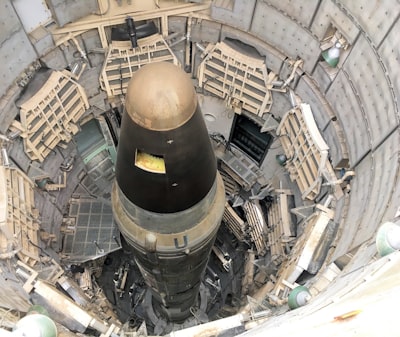Why the US Military Didn’t Use GBU-57 ‘Bunker Buster’ Bombs on Iran’s Deep Nuclear Sites: Technology, Strategy, and Geopolitical Implications
The Decision That Sparked Questions
The recent revelation by General Dan Caine, the highest-ranking US military officer, that American forces did not deploy their formidable GBU-57 Massive Ordnance Penetrator (MOP) ‘Bunker Buster’ bombs against Iran’s underground Isfahan nuclear facility has reignited widespread interest—and concern—about the limits of military technology and the evolving cat-and-mouse game around nuclear proliferation. As tensions flare and speculation swirls, the world is asking: Why were these advanced bombs deemed ineffective, and what does this mean for future security and nonproliferation efforts?
Keywords: GBU-57, bunker buster, US military, Iran nuclear facilities, Isfahan, Natanz, Fordow, Tomahawk missiles, underground bunkers, nuclear proliferation, military technology, arms race, strategic bombing, defense capabilities
What Is the GBU-57 Bunker Buster and Why Wasn’t It Used in Isfahan?
The GBU-57 Massive Ordnance Penetrator is known as the US military’s most powerful non-nuclear bomb, specifically engineered to destroy heavily fortified underground bunkers. It weighs over 13 metric tons and can penetrate up to 60 meters of reinforced concrete before detonating. However, General Caine’s briefing to Congress revealed a sobering reality: the Isfahan nuclear site’s underground chambers are so deep and well-protected that even the GBU-57 would likely fail to reach or destroy the critical uranium stockpiles hidden there.
Why Does This Matter?
- Limits of current military technology: With key Iranian nuclear assets shielded deeper than ever before, traditional bunker-busting munitions may no longer suffice.
- Strategic implications: The US may need to rethink military options and consider alternative strategies for countering deeply buried threats.
How Deep-Buried Are Iran’s Nuclear Facilities?
Iran’s Fordow, Natanz, and especially Isfahan sites represent some of the world’s most advanced underground facilities. Recent intelligence suggests much of Iran’s enriched uranium is stockpiled in bunkers unreachable by standard or even advanced ordnance. This has sparked debate about how nations can ensure compliance with nonproliferation agreements and what options are on the table if diplomacy fails.
Noteworthy Sites:
- Fordow: Hard-targeted with multiple GBU-57s in recent US strikes
- Natanz: Struck but partially protected
- Isfahan: Struck only with Tomahawk cruise missiles, not penetrators, due to depth
Comparisons and Alternatives: Tomahawk Missiles vs. Bunker Busters
When GBU-57s aren’t enough, the US employs Tomahawk cruise missiles as a precision-standoff weapon. However, these are most effective against surface or lightly-buried targets.
Key differences:
- Tomahawk Missiles: Long range, precision, but limited penetration
- GBU-57 MOP: Deep penetration, but depth limits reached against next-gen bunkers like Isfahan
What Does This Mean for Future Military Strategy and Global Security?
The inability to neutralize Iran’s most deeply buried nuclear material has far-reaching implications:
- Arms race in underground fortification: Other adversaries may emulate Iran’s strategy
- Increased need for intelligence and cyber operations: When kinetic options fail, alternate approaches are prioritized
- Diplomacy becomes critical: Military “quick-fix” solutions are less viable, shifting pressure onto nonmilitary tools
FAQs: Answering Common Questions
Q: Can any weapon reach ultra-deep bunkers like Isfahan?
A: Current conventional munitions are likely insufficient; only a nuclear strike could guarantee destruction, but international law and escalation risks make this option extremely unlikely.
Q: Does this mean Iran’s nuclear program is unstoppable?
A: Not unstoppable, but significantly harder to delay or disrupt with traditional military means, emphasizing the need for diplomatic solutions and advanced surveillance.
Q: What are ‘super bunker busters’ and do they exist?
A: Theoretically, deeper-penetrating or nuclear-tipped bunker busters could be developed, but none are currently operational for regular military use.
Conclusion: The Next Chapter in the Shadow War
The US military’s candid admission that existing bunker-busting bombs are ineffective against Iran’s most secure nuclear sites has spotlighted the shifting nature of 21st-century conflict. As underground fortification technology outpaces current weaponry, military planners, policymakers, and citizens alike must reconsider the balance between force, innovation, and diplomacy when addressing nuclear proliferation threats. The stakes—for regional and global security—have never been higher.
For further reading:

Comments
No comments yet. Be the first to comment!